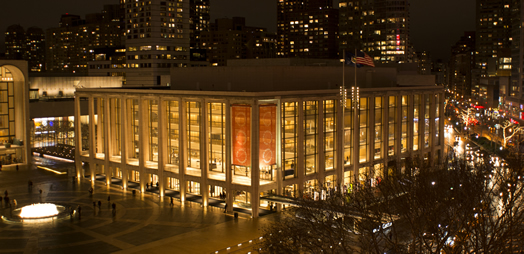Allegro
What’s in a Name?
Big donors have choices: name a building after yourself, or support dozens of ensembles for years to come
Volume 117, No. 11November, 2017

Tom Olcott is the financial vice president of Local 802 and the supervisor of the union’s concert department
What’s more important to the artistic health of New York City: a flagship concert hall or a thriving network of smaller ensembles? The answer to that question is open to debate, but it could make all the difference. As most of us know, the home of the New York Philharmonic at Lincoln Center was renamed David Geffen Hall in 2015 after the philanthropist donated $100 million. But that was just the tip of the iceberg. The building was due for a gut renovation, but after the price tag approached the $500 million range, there were questions raised about who would pay for it, and the project was scaled back. Mr. Geffen was not amused; the headline in a recent New York Times story read “David Geffen Criticizes ‘Shameful’ Lack of Support for Concert Hall.” Mr. Geffen was quoted as saying, “New York deserves to have the best concert hall for the Philharmonic. Without great support, the opera in New York, the Philharmonic in New York – these kinds of institutions will greatly suffer.”
Mr. Geffen went on to deplore the absence of philanthropic giving for arts funding in New York, a place that would seem to have virtually limitless private funding resources. Translation: there are a lot of very rich people in New York and yet arts funding is on the decline.
But is it possible that signature projects – such as naming or renovating buildings – are not the most efficient way to make the arts scene thrive? The same money from the same generous donors could support more than a dozen small ensembles for years. Classical music could be distributed to wider and more diverse populations. Local museums, theatre and dance companies, and independent arts training facilities could all be supported for the cost of one major building naming or renovation.

In 2015, the home of the New York Philharmonic was renamed David Geffen Hall after the philanthropist donated $100 million.
Yes, in this approach, the big donors would not see their names on buildings. But by supporting dozens of small ensembles, donors would influence the cultural scene for decades to come. Thousands of people would enjoy the arts. The total audience would be much larger than the pool of Lincoln Center subscribers. This kind of funding could also counteract the decades-long erosion of arts education in the public schools. It could support a truly diverse population of deeply skilled and educated young musicians.
For “regular” donors, my advice is: please keep giving! We take deep pride that our NYC ensembles are supported by individuals (as well as by foundations and the government).
But for wealthy donors, may I humbly ask the following question: Is naming or renovating a building your primary interest, or can you instead imagine supporting the deeply personal survival of actual artists who actually inhabit the concert halls and other buildings? Without that form of support, it is hard to imagine who will do the “performing” part of the performing arts – and who will attend. Just personally, if I had $100 million to donate to the arts, I would opt for the longer-term support of artists rather than the building name. The building will survive only as long as its artistic participants have a viable life. Big money could do both things.
